This was published 6 years ago
Perth walking tour: The story behind Australia's first free colony
By Steve Meacham
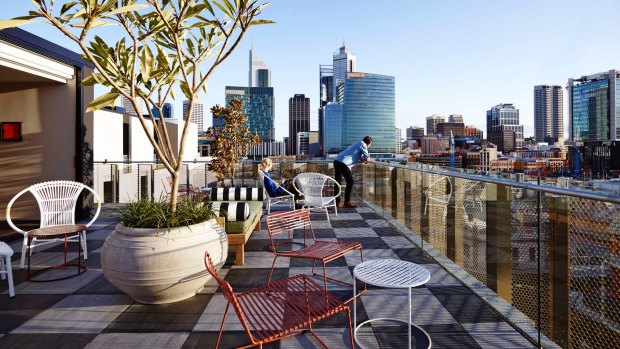
Rooftop terrace at Alex Hotel.
There's no plaque outside 57 Murray Street in Perth's CBD, nothing to record the significant role it played in Australian history.
Yet had you visited this same building anytime between 1915 and 1940, you'd have witnessed a steady stream of Indigenous Australians queuing up – for permission to marry, the correct form to move to another town, or just to collect a bar of soap.
The imposing, heritage-listed building was once the headquarters of possibly the most infamous public servant this country has ever produced.
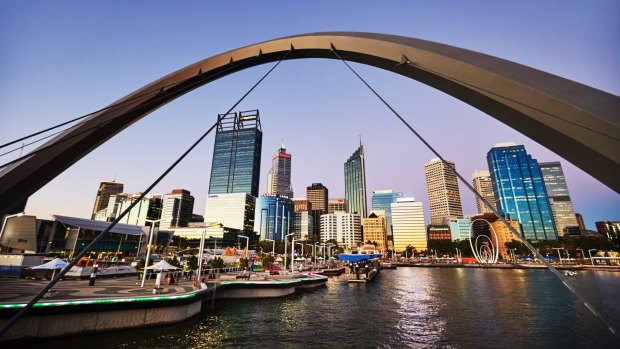
Dusk at Elizabeth Quay, Perth.Credit: Illustrations Photography
Auber Octavius (AO) Neville – sometimes known as Neville the Devil – was appointed Chief Protector of Aborigines by the Western Australian government in 1915, with his title changing to Commissioner for Native Affairs in 1936 until his retirement four years later.
Played by Kenneth Branagh in the movie Rabbit Proof Fence, Neville was the architect of the policy of assimilation we now call "the Stolen Generations".
As Chief Protector of Aborigines, Neville ironically believed "the Native race" should be genetically absorbed.
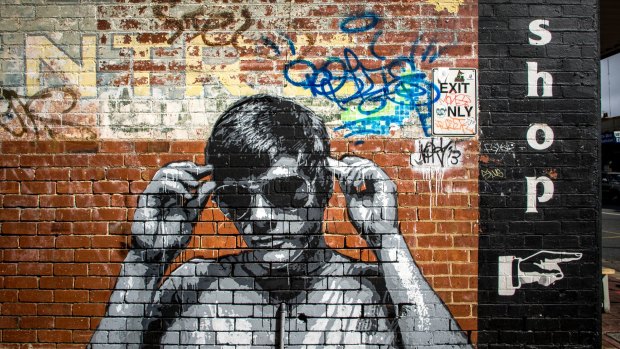
Street art in Perth.
As he put it: "Are we going to have one million blacks in the Commonwealth? Or are we going to merge them into our white community and eventually forget that there were any Aborigines in Australia?"
But enough of Neville and the past. I'm here on a two-hour walking tour with Ryan Zaknich, co-founder of the award-winning Two Feet & a Heartbeat company, which offers bespoke walking tours of the city, depending on your interests. And my request had been simple: "Show me what's new."
For those of you who haven't been to the WA capital in the past few years - and Perth's visitors will swell once Qantas launches its first non-stop, 17-hour, 14,500 km "kangaroo hop" flight to London in March aboard a Boeing 787 Dreamliner - much has changed.
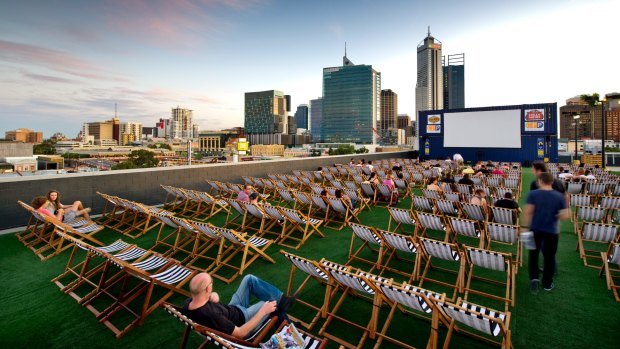
Rooftop Cinemas, Northbridge.
So what might entice you into a stopover in your own country?
James Packer's new five-star $650 million hotel Crown Towers, Perth (which opened in December 2016 and is linked to the neighbouring Crown Metropole and Crown Casino) offers superb views of the changing Perth skyline from its top floor club lounge (crownhotels.com.au/crown-towers-perth/en).
Look, there's the 60,000-seater, $1.6 billion Perth Stadium (perthstadium.com.au/), which held its first contest this weekend (January 28 with the One Day International between Australia and England) with Test matches to follow and both the West Coast Eagles and Fremantle Dockers playing their AFL home games there from this AFL season on.
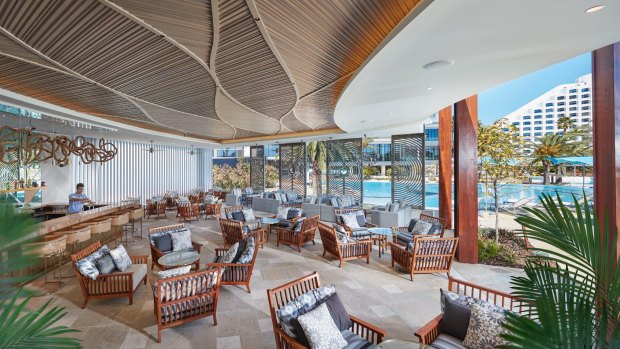
Crown Towers Perth.
So what else is new? I meet Zaknich at the Atlas Building, a former assurance headquarters that opened in 1931 on The Esplanade.
If that hardly seems new, we're here for two reasons. Firstly, it is the home of the Museum of Perth (museumofperth.com.au/), a not-for-profit organisation which opened in 2016 to chronicle the city's social, cultural, political and architectural history.
The exhibition today is Demolished Icons of Perth – a photographic display showing buildings that were bulldozed alongside photos of what replaced them. "Perth could have been the most beautiful city in Australia," Zaknich says. "But we destroyed it."
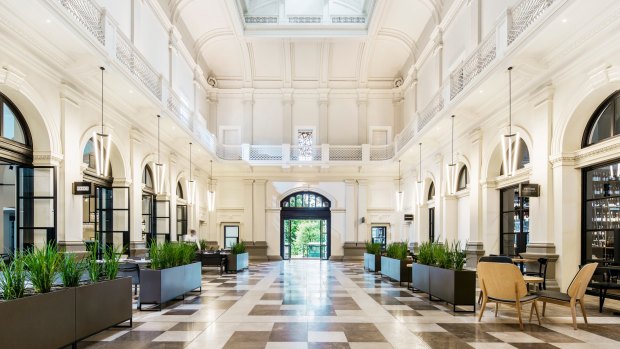
COMO The Treasury, Perth.
Secondly, Zaknich knows the Atlas Building has arguably the best view (for the time being) of Elizabeth Quay, the multi-billion dollar renovation of the Esplanade Reserve and the "Perth waterfront" (the WA government has spent $440 million developing the site which will eventually feature the future Ritz-Carlton hotel – some 2800 new hotel rooms are due to open in Perth before the end of 2019).
This foreshore was the birthplace of the Swan River Colony. It's often forgotten Perth is the third oldest capital city in Australia (after Sydney and Hobart). Initially – and isn't this the story of European settlement of Australia? – it was a debacle.
Captain James Stirling, the city's founder and WA's first governor, arrived in 1829 to form the first free colony in Australia (though the Dutch explorer Willem de Vlamingh had named the Swan River after the black swans he saw there in 1697). Of course, the local Nyoongar people had been there for 40,000 years or more. Quite naturally, they took exception when their traditional food supplies were consumed by the newcomers.
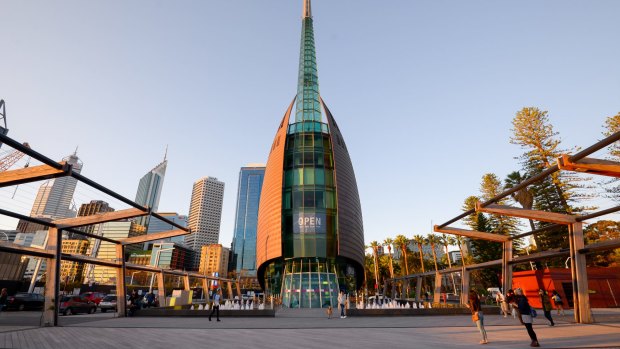
The futuristic Bell Tower on Barrack Street Jetty, Perth.Credit: Shutterstock
As Zaknich points out, the Swan River at this point is a misnomer: it's actually an easily defended part of the tidal estuary. But although it will be several years before Elizabeth Quay is completed, it has already become a focal point of the city.
A 20-metre high, double-arched suspension bridge for pedestrians and cyclists now crosses to the Isle of Voyage, containing the rebuilt Florence Hummerston Kiosk (isleofvoyage.com.au/home).
Then there are the seasonal pop-up festivals, the futuristic Bell Tower on Barrack Street Jetty, and signature $1.3 million, eight-storey steel and carbon fibre installation designed by local artist Christian de Vietri, unveiled in 2016 (apparently it represents water ripples reflecting the Swan River, the land and the sky).
As we walk northwards from Elizabeth Quay, Zaknich points out back lane bars and restaurants that will be thriving come Friday evening, a legacy of the WA government's 2007 licensing reform designed to encourage a more vibrant streetscape (including the street art prompted by the not-for-profit organisation FORM – form.net.au/).
We also venture into COMO The Treasury – the 48-room luxury hotel recast from what used to be the 19th-century State Buildings (comohotels.com/thetreasury). Then we take the lift up to Perth's most celebrated rooftop restaurant, Wildflower (wildflowerperth.com.au/). Sadly, there's no time to sample the $145 five course tasting plate determined by whichever of the six Indigenous seasons we happen to be visiting in (example: "Slow-cooked Doodlakine pork with sweet potato, sour radish, candied mustard, Davidson and powdered Kakadu plum" – a winner at any corroboree).
Throughout our walk, Zaknich fills me in on the tragedies of Midgegooroo and his son, Yagan.
Midgegooroo was a tribal elder of the Nyungar nation who fell foul of white man's law. This was (a) because white man's law had never been explained to him and/or (b) because he was obeying his traditional laws – which meant if someone arrived unannounced and stole your fish, you were fully entitled to pluck his goose.
What is undeniable is that Midgegooroo was captured, imprisoned, then condemned to death without a trial, tied to the gates of the city gaol and executed by firing squad.
The main reason Zaknich is telling me this is because our tour is due to end at Yagan Square.
Since the railway arrived in 1881, Perth has been a divided city. Sandwiched between the Swan and the trains, the city centre has stretched out in a narrow east-west corridor.
Northbridge was home to Chinese market gardeners, opium dens, mahjong rooms, whore houses, nightclubs.
Of course, it had to reinvent itself once that custom (minus the market gardening) was transferred to the newly opened Burswood Island Casino in 1985.
Northbridge is now undergoing another revival, as demonstrated by trendy hotels such as the Alex Hotel (alexhotel.com.au/), funky restaurants like Sauma, Meat Candy and Lucky Chan's Laundry + Noodle Bar, and Northbridge Piazza with its free outdoor movies.
This year, Northbridge is being connected to the Perth CBD for the first time in 137 years. According to its official website, Yagan Square will be "the city's new heart ... a hub of activity both during the day and at night with cafes, restaurants, pop-up shops and kiosks".
Essentially it is a new public meeting space (similar to Melbourne's Federation Square) created by enclosing and building over the railway tracks.
"This will be where Eagles fans gather when they win the Grand Final," Zaknich says. "It can cater for up to 8500 people."
Of course, the main significance of Yagan Square is its name.
Yagan is one of the few Aborigines to have made it into the Australian Dictionary of Biography. A resistance leader and defender of his people, Yagan was shot dead on July 11,1833, by a young shepherd boy eager to claim the £30 bounty for capturing him "dead or alive".
The story of Yagan's subsequent decapitation, the skinning of his tribal tattoos, the return of his severed head from the UK in 1997, and its final burial in 2010 is too tortuous to repeat (no one emerges with glory).
Yet the naming of Perth's new civic corroboree space after him – at the same time the revitalised quay is rebadged after the reigning monarch – marks a reconciliation of sorts. Doesn't it?
STAY
Tribe Hotel Perth, 4 Walker Avenue, West Perth. See tribehotels.com.au/perth
TOUR
Two Feet & a Heartbeat has a range of walking tours of Perth, Fremantle and Rottnest Island including bar tours, art and culture, food and beverage and heritage tours. Ph 1800 459 388, see twofeet.com.au/perth-home/
Steve Meacham was a guest of Tourism Western Australia.
Sign up for the Traveller Deals newsletter
Get exclusive travel deals delivered straight to your inbox. Sign up now.